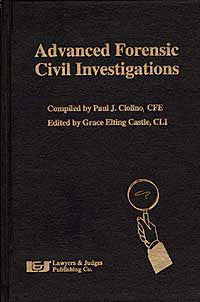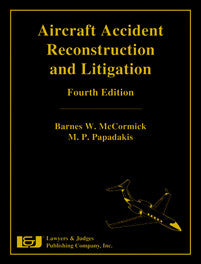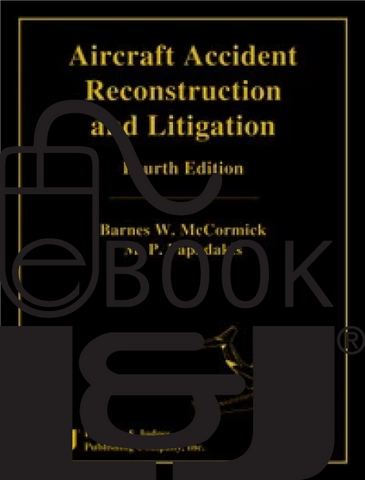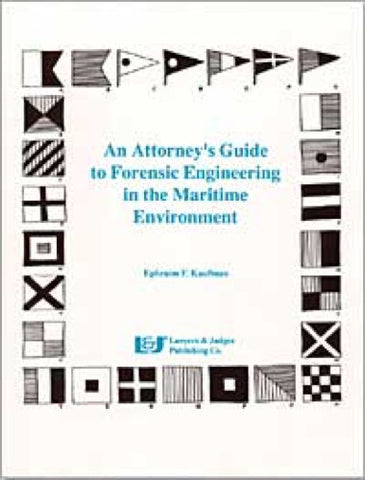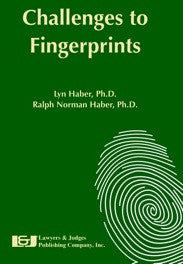
Challenges to Fingerprints
- Author: Lyn Haber, Ralph N Haber
- ISBN 10: 1-933264-15-2
- ISBN 13: 978-1-933264-15-8
- Copyright Date Ed: September 1, 2009
- Pages: 204 pages
- Binding Information: Paperback
- Size: 6 ✕ 9 Inches (US)
This book is the culmination of years of research. The authors have meticulously researched the field of fingerprint comparisons and now offer you an in-depth look at the reliability of this science. They cover topics such as forensic individualization, the ACE method, Automated Fingerprint Search, certification, error rates, contamination, training, and court challenges to fingerprints, among others.
Beginning with a brief background into fingerprints, Ralph and Lyn Haber explain, in lay terms, the science behind forensic fingerprint comparison, and how exactly reliable is a fingerprint identification. They then take a more in-depth look into fingerprints and their use, including fingerprint comparison. A practice that has existed for over 100 years, fingerprint comparison has a very limited amount of research on error rates. This book helps fill that gap.
If you are a trial attorney, investigator, or any professional working with fingerprint data, you need this book's expertise on this pervasive--yet inadequately examined--subject. You benefit from over a decade of thorough research into fingerprint comparison, including the authors' conference presentations, expert witness retainment, training courses, journal articles, television interviews, and more. Buy your copy today!
This book is also available as an E-book. Click here to purchase and download:
Topics Include:
Fingerprint evidence Fingerprint comparisons Fingerprint examiners Fingerprint comparison methodology Fingerprint individuation Friction ridge skin on fingers Exemplar fingerprints Latent fingerprints Ridge flow patterns Galton feature descriptions Ridges-in-sequence description Finding and lifting latent prints Print value and quality Crime scene latent print documentation Crime lab processing and documentation of latent fingerprints Examiner proficiency and certification testing Erroneous identification rates Contamination Regulatory standards Court challenges
Table of Contents
Acknowledgments
Chapter 1. Introduction to Fingerprints
1.1 A Crime Involving Only Fingerprint Evidence
1.2 Critical Issues in this Scenario
1.3 How Accurate are Fingerprint Comparisons?
1.4 About the Authors
1.5 Fingerprint Examiners and the Organizations that Regulate Them
1.6 Who is the Relevant Scientific Community to Evaluate Fingerprint Comparison Methodology for the Courts?
1.7 Our Goals and Intended Audience
1.8 Chapter Outlines
Chapter 2. Individualization: Fingerprint Comparison Isn’t Like Finding Your Wife in a Crowd
2.1 Everyday (Non-Forensic) Individualization
2.2 Forensic Individuation
2.3 Experiential Feedback and Scientific Method
2.4 The Fingerprint Examiner’s Task
A. Assessment of Sorting Accuracy When the Target Stimuli are Never Confusable: Ants and Elephants)
B. Assessment of Sorting Accuracy When the Target Stimuli are Confusable: Sex)
C. Assessment of Sorting Accuracy for Fingerprints: Are Same and Different Underlying Patterns Confusable? )
2.5 Assumptions for Forensic Fingerprint Comparisons
A. The Permanence Assumption for Friction Ridge Skin Patterns)
B. The Uniqueness Assumptions for Friction Ridge Skin Patterns)
2.6 Assessment of the Accuracy (Validity) of Fingerprint Comparison Judgments
A. Science Differentiates between Reliability and Validity)
B. A Scientific Method to Compare Fingerprints)
2.7 Specification of a Method versus an Application of a Method
Chapter 3. Fingers and Toes
3.1 Friction Ridge Skin on Fingers
3.2 Images of Friction Ridge Skin Patterns
A. Exemplar Fingerprints: Inked and Scanned, Rolled and Plain)
B. Latent Fingerprints)
3.3 Feature Description Systems
3.4 Level 1 Ridge Flow Patterns
A. Uses of Level 1 Classification)
B. Reliability of Level 1 Classification)
3.5 Level 2: Galton Feature Descriptions
A. Uses of Level 2 Galton Minutiae Descriptions)
B. Reliability of Level 2 Galton Minutiae Descriptions)
C. Defining Spatial Locations of Galton Features by Ridge Counts)
D. Reliability of Counting Intervening Ridges)
E. Defining Spatial Location of Galton Minutiae by Eyeballing)
F. Reliability of Eyeballing the Spatial Locations of Galton Features )
3.6 Level 2 Features in the Ridges-in-Sequence Description
A. Reliability of Describing the Sequence of Features Along a Ridge)
3.7 Level 3 Description
A. Uses of Level 3)
B. Reliability of Level 3 Descriptions)
Chapter 4. Where are the Fingerprints? Crime Scene and Laboratory Processing of Latent Fingerprints
4.1 Where are the Fingerprints? )
A. Knowing Where to Look )
B. Finding Invisible Latent Prints)
C. Lifting Visible Latent Prints)
4.2 Latent Print Value and Quality
4.3 Crime Scene Latent Print Documentation
A. Documentation of Chain of Custody)
B. Photographic Documentation)
C. Matrix Documentation)
D. Crime Scene Investigator’s Bench Notes and Report)
4.4 Crime Laboratory Processing of Latent Fingerprints
A. Enlarging the Latent Print )
B. Isolating the Latent )
C. Alterations to Improve Image Quality)
D. Manipulation of Latent Prints for Automated Search Systems)
E. Manipulation of Latent and Exemplar Prints to Show to the Jury)
4.5 Crime Laboratory Documentation and Report
Chapter 5. That’s Your Fingerprint! The ACE Comparison Method
5.1 Introduction to the ACE Method
A. How Many ACE Methods? )B. Does the Fingerprint Profession Need a Specified Method? )
C. Our Overview of the ACE Method)
5.2 The Analysis Stage of ACE
A. Analysis Step 1: Examiner Judgment Whether a Latent is of Value for Further Comparison)
B. Analysis Step 2: Description of Physical Characteristics of the Latent)
C. Analysis Step 3: Selection of Friction Ridge Features to be Used for Comparison)
D. Analysis Step 4: Documentation of Confidence in Different Areas of the Latent)
5.3 The Comparison Stage of ACE
A. Comparison Step 1: Description of Distortions in the Exemplar)
B. Comparison Step 2: Marking Sets of Features or Ridges in Their Corresponding Spatial Locations)
C. Comparison Step 3: Distinguishing Between Distortions (Two Takes of the Same Finger) and Two-Donor Pattern Differences (Images fromTwo Different Fingers) )
D. Comparison Step 4: The Exclusion Standard)
E. Comparison Step 5: Assessment of Amount of Agreement Between the Latent and Exemplar)
5.4 The Evaluation Stage of ACE
A. An Objective Measure of Amount of Similarity)
B. An Objective Sufficiency Standard)
5.5 The Verification Stage
A. Non-Blind Verification)
B. Blind Verification)
5.6 Reporting Results of a Fingerprint Comparison
5.7 An Evaluation of ACE as a Scientific Comparison Method
Chapter 6. Automated Fingerprint Search (AFIS)
6.1 Search Accuracy
6.2 Factors that Affect Search Accuracy
A. Quality of database exemplars)
B. Preprocessing latents for AFIS input)
C. Variation among algorithms defining similarity )
D. Variation in the size of the database searched)
E. Variation in the number of candidates requested)
F. Variation in the quality of the crime scene latent print)
G. Variation in training and proficiency of AFIS technicians)
6.3 Identification Accuracy Rates of AFIS
A. Automated ten-print to ten-print searches)
B. Biometric identification systems)
6.4 Comparisons of Suspects Produced by AFIS are Subject to Biases that Reduce Accuracy
6.5 Documentation and Discovery
A. An AFIS procedural manual )
B. An AFIS report)
6.6 The Unrecognized Bias in Cold Hits
A. Three statistical examples)
Chapter 7. How Good is Stella LaVie? Proficiency and Certification Testing of Fingerprint Examiners
7.1 A Brief History of Proficiency and Certification Testing of Fingerprint Examiners
7.2 Selection of the Content of a Proficiency Test
A. Content Appropriateness)
B. Item Difficulty Appropriateness)
C. Skills to Be Assessed)
D. Comparison Method Employed)
7.3 Selection of Appropriate Response Categories
A. Test Response Categories Do Not Correspond to the Profession’s Rules)
7.4 Statistical Standards
A. Validity of Proficiency Testing)
B. Reliability of Current Proficiency Tests)
7.5 Administration of Proficiency Tests
A. Bias in Proficiency Testing)
B. Uniform Testing and Scoring Conditions)
C. Objective Resolution of Scoring Ambiguities)
D. Sample Size and Representativeness)
E. Quality Control Regulations for Proficiency Testing)
7.6 Certification Testing
7.7 Scoring and Reporting Test Results
A. Results from a Hypothetical Proficiency Test)
B. Mis-scoring Test Results )
C. Misrepresenting Error Rate on the Basis of the Number of Comparisons Made)
D. Problems with CTS scoring )
Chapter 8. That’s Your Fingerprint (Only It Isn’t)! Error Rates of Fingerprint Comparisons
8.1 Examiner Erroneous Identification Rates
A. Experimental test results as estimates of erroneous identification rates)
B. Proficiency and certification test results as estimates of error rates)
C. Erroneous identifications made in court)
8.2 The ACE Method’s Erroneous Identification Rate
A. Erroneous identifications: examiner or method? )
B. Experimental tests of the error rate of the ACE method)
C. Research evidence showing examiner inconsistency)
8.3 The Power of the ACE Method to Identify Criminals
A. Distribution of conclusions from ACE)
B. Interaction among the four conclusions)
Chapter 9. Contamination in the Crime Laboratory
9.1 Expectation and Mindset
9.2 Recent Fingerprint Experiments Demonstrating Bias
9.3 Bias from Information Flow in Crime Laboratories
A. Quality Control Manual Governing Information Flow)
9.4 Biases in the ACE Method
A. Analysis Stage )
B. Comparison Stage of ACE)
C. Evaluation Stage)
D. Verification Stage)
E. Quality Control Manual for ACE Method)
9.5 Bias in AFIS Processing and Examination
A. The Submission Process Requires the Examiner to Interpret the Latent)
B. Failure to Analyze the Latent Print Before Comparison to AFIS Candidates)
C. Using the AFIS Rating to Choose Candidates to Compare)
D. Knowledge of Extraneous Information When Making an Identification)
E. Reconfiguring an Input to AFIS )
F. Biases Associated with Cold Hits)
Chapter 10. Standards Governing the Qualifications of Fingerprint Examiners and Crime Laboratories
10.1 Fingerprint Examiners and Crime Laboratories
10.2 Standards Regulating Fingerprint Examiners
A. Regulatory Standards for Latent Print Examiner Pre-professional Education and Prior Experience)
B. Regulatory Standards for LPE Initial Training)
C. Regulatory Standards for LPE Training to Competence)
D. Regulatory Standards for LPE Supervised Experience)
E. Regulatory Standards for LPE Continuing Education)
F. Regulatory Standards for LPE Latent Fingerprint Comparison Experience)
G. Regulatory Standards for LPE Proficiency Testing)
H. Regulatory Standards for LPE Certification)
I. Regulatory Standards for LPE Court Testimony )
10.3 Standard Operating Procedures in Crime Laboratories
A. SOPs for Laboratory Work Flow)
B. SOPs for Fingerprint Comparisons)
C. SOPs for Verification )
D. SOPs for Bench Notes and Casework Reports)
E. SOPs for Supervision and Case Reviews )
F. SOPs to Monitor and Investigate Errors)
Chapter 11. Challenges to Claims by the Fingerprint Profession About Fingerprint Comparison Accuracy
11.1 Empirical Claims
A. Examiners Employ a Single Comparison Method Known as ACE)
B. The ACE Error Rate is (Close to) Zero, Because Few Publicized Erroneous Identifications Have Been Found )
C. Proficiency Test Results Indicate a Very Low ACE Error Rate)
D. ACE is Based on the Scientific Method)
E. Examiner Certainty Makes Conclusions Valid)
F. The 50K Study Demonstrates that Fingerprints are Unique)
G. The 50K Study Demonstrates that Latent Prints are Correctly Matched to Exemplars)
11.2 Rhetorical Claims
A. One Hundred Years of Court Acceptance Mean the ACE Method is Valid)
B. Adversarial Testing Shows the Error Rate of ACE is Zero)
C. Verification Assures the Error Rate of ACE is Close to Zero)
D. Verification Procedures Provide a Test of the Validity of ACE)
E. Second Opinions Protect an Innocent Defendant)
F. The Error Rate of the ACE Method is Zero)
G. Only Poorly Trained or Inexperienced Examiners Make Erroneous Identifications)
Chapter 12. Challenges to Fingerprints
12.1 Challenges Based on Inadequate Professional Requirements for Latent Print Examiners
A. Selection)
B. Training)
C. Experience)
D. Proficiency)
E. Certification)
F. Court Testimony)
12.2 Challenges Based on Inadequate Quality Control Standards in Crime Laboratories
12.3 Challenges Based on the Absence of Empirical Scientific Evidence
A. The Reliability and Validity of AFIS-Based Comparisons)
B. The Strength of Bias Effects During ACE)
C. Evidence of Uniqueness)
D. Validity Evidence for the ACE Method)
E. Reliability Evidence for the ACE Method)
12.4 Court Challenges to Fingerprint Evidence
A. U.S. v. Parks (1991: Federal District Court, Central District, California, CR 91-398-JSL) )
B. Jacobs v. Virgin Islands (2002, 53F Appx 651,652 (3rd Cir)) )
C. U.S. v. Plaza (I) 2001) )
D. Commonwealth of Massachusetts v. Patterson (2005) )
E. New Hampshire v. Langill (2007: http://clpex.com/information/NHvLangill) )
F. Maryland v. Rose (2007: Circuit Court of Baltimore County, Maryland)
References
About the Authors
Index

